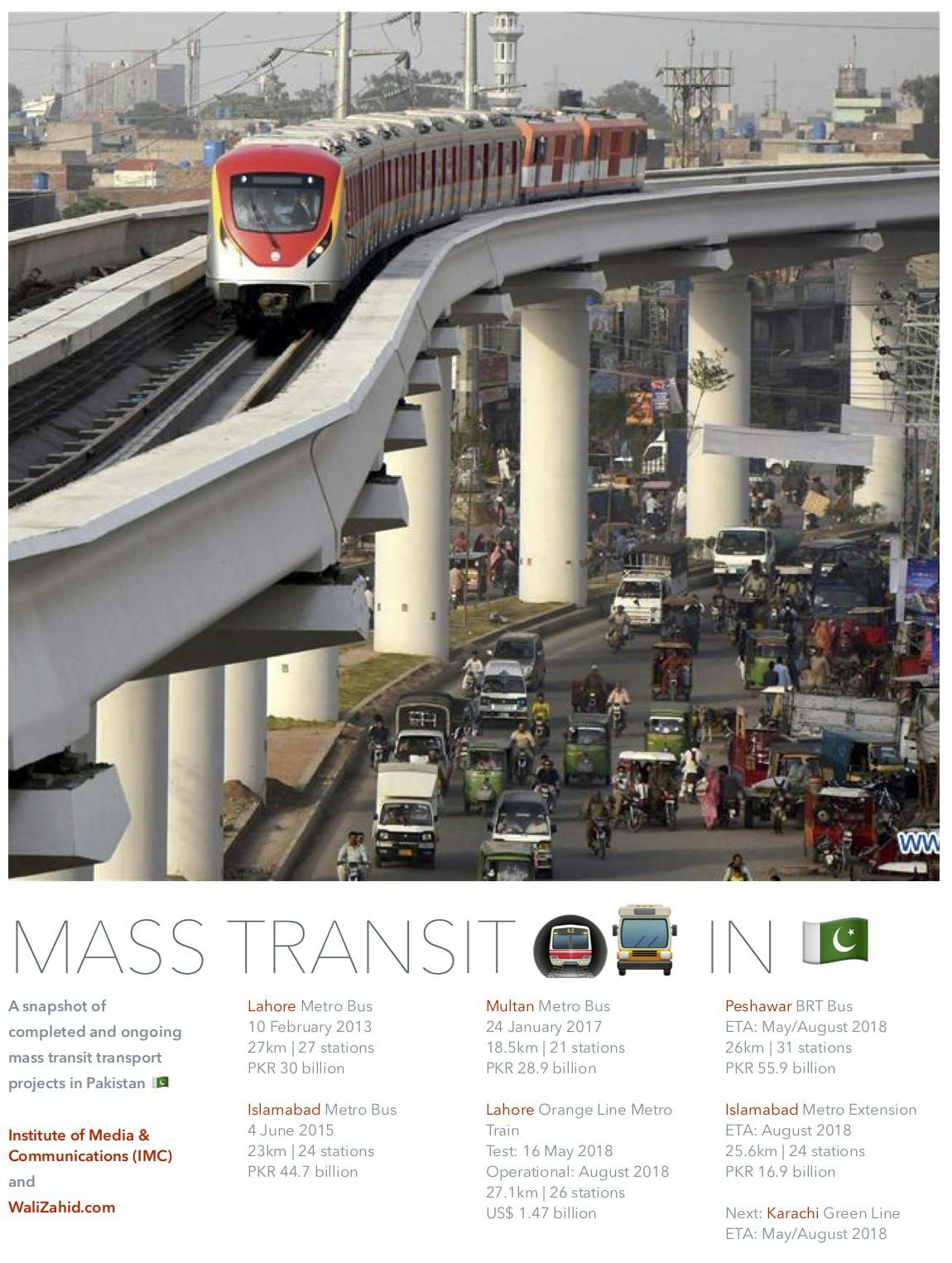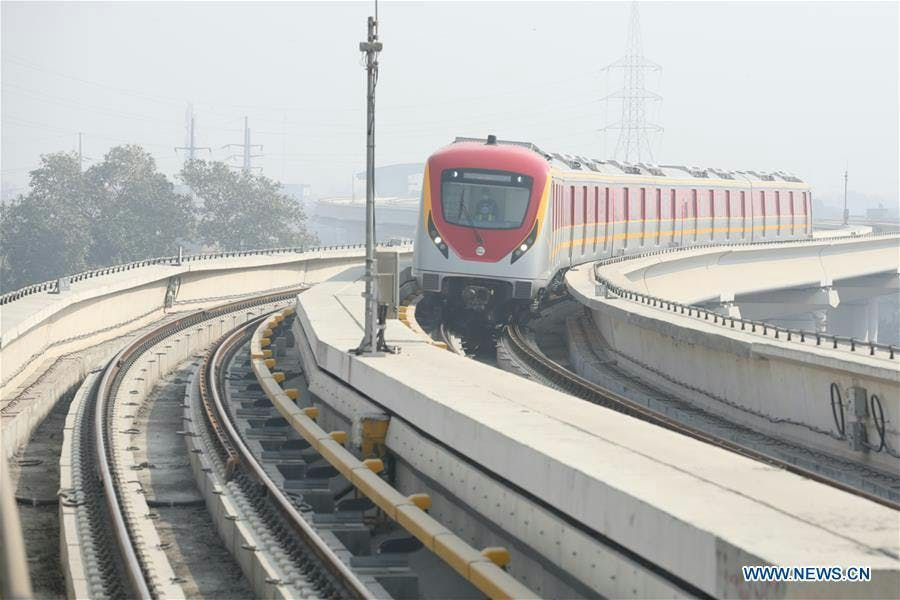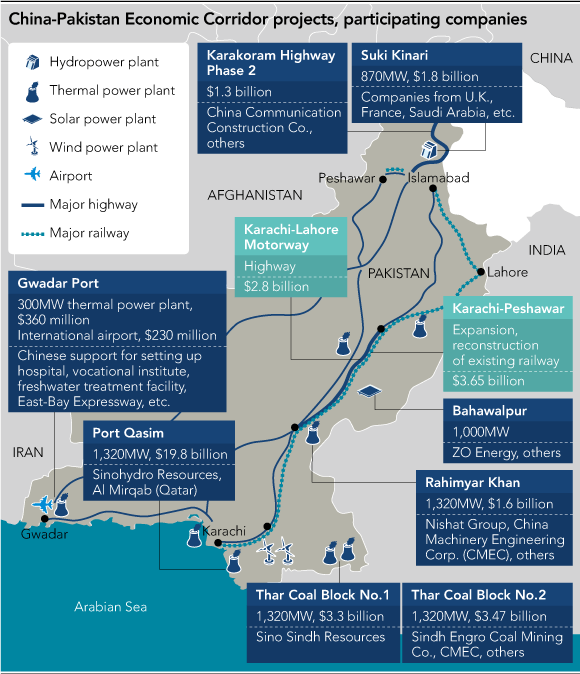Mass-transit transport in urban Pakistan taking shape

Islamabad: 7 July 2022 update
PM Shehbaz Sharif inaugurates Islamabad Green Line Bus service from Bhara Kahu to PIMS and Blue Line from Koral to PIMS. The Green and Blue services will link with the Red Line (Pindi-Islamabad Metro). From Faiz Ahmad Faiz bus stop near Peshawar Morr, the passengers can take Orange Line to Islamabad International Airport.
Islamabad: 18 April 2022 update
Peshawar Morr to Islamabad Airport Orange Line Metro bus route has been made operational today. Earlier, this was planned to be operational in 2018.
Speaking at the inauguration ceremony of the mass transit bus, PM Shehbaz Sharif said the journey of Pakistan’s progress has resumed after a four-year halt during PTI tenure.
This is also the first mass-transit connection to an airport in Pakistan. Previously, passengers would access all airports with taxis or private cars. The commuters all over the world have multiple ways to reach their city airports. Glad that this anomaly has ended.
Lahore: 29 October 2016 | Original article starts
In a matter of three years (2013-16), citizens in three of its large cities – Lahore (population: 11 million), Rawalpindi-Islamabad (population: 3.1 million twin cities combined) and recently-inaugurated in Multan (population: 1.9 million) – are able to travel in clean, safe and air-conditioned Metro buses on dedicated road tracks on a 20¢ fare which is a fraction of what commuters pay in the developed world.
But we don’t need to get too self-congratulatory. In our neighbourhood, India is building a bullet train that will start work in September 2017 and will take five years to complete.
While in Pakistan, with the current infrastructure, in a 2017 population of 208 million, fewer than a million a day will be able to ride these BRT buses.
Three small-length Metro bus routes in three cities only means that a large – very very large – population still uses public transport which is unreliable, decayed, unsafe and hurts your self esteem long before you reach your school, university, office or get back home.
Subscribe to our YouTube channel: Wali Zahid
In spite of the small scale, Metro bus is a good beginning.
And Pakistanis look forward to the whole country being wired in a network of mass-transit buses, Metro trains and intercity rail.
Updates since this piece was written
25 October 2020: After a delay of nearly three years, the Lahore Orange Line Metro Train (OLMT) starts its commercial service.
16 May 2018: Test run ceremony of OLMT is held today at Islam Park station. CM Shehbaz Sharif is chief guest.
27 Feb 2018: History in the making: The Lahore citizens see a trial run of OLMT.
14 Nov 2017: $687 million Quetta Mass Transit: Chinese Policy Bank will give loan to Pakistan amounting to 85 percent of project at a 3% interest rate. In March, a team of Chinese engineers and experts arrives in Quetta to start work on the project, approved under CPEC.
6 May: PM Sharif performs groundbreaking of Metro Bus connecting New Islamabad Airport with Peshawar Mor, saying modern infrastructure including airports, highways and transport system is hallmark of a dignified nation. Earlier, on 13 April, Metro Bus project extension was approved at a cost of Rs 16.9 billion for construction of 25.6km with 24 bus stations.
29 March: Asian Development Bank (ADB) agrees to provide Rs 50 billion soft loan for Peshawar’s Rs 57B Metro bus rapid transit (BRT). Part of BRT is likely to complete by June of 2018.
20 March: Punjab CM Shehbaz Sharif launches 14 feeder routes that will run 200 automatic air-conditioned buses connecting passengers from areas around Metro bus stations spreading 129km.
10 Jan 2017: PM Sharif issues directives to connect the Islamabad Metro Bus with the New Islamabad International Airport. The project may cost Rs 18 billion and will add 14 bus stations along the route – from Peshawar Morr to New Islamabad Airport.
The new Metro Bus service will most likely start in August 2018.
29 Dec 2016: The sixth meeting of the Joint Coordination Committee (JCC) in Beijing approves inclusion of these mass-transit projects in CPEC framework: Karachi Circular Railways and mass transit railways projects in each of the provincial headquarters to facilitate millions of people.
25 Nov: PM Sharif arrives in Ashgabat on a two-day official visit to Turkmenistan. Sharif is leading a Pakistani delegation to the first-ever Global Conference on Sustainable Transport – 2030 Agenda for Sustainable Development – being held at Ashgabat under the auspices of the United Nations.
Then, these are road and railway transport routes being developed from scratched or upgraded under CPEC. Source: Bloomberg
The next in line of mass-transit projects is Lahore’s 27km Orange Line Metro Train (OLMT, a Mass Rapid Transit, or MRT, project).
Built at the cost of Rs 154 billion, the train service is set to launch in August 2018 (delayed). Over 250,000 people will travel by Orange Line train every day through 26 train stations.
OLMT is currently facing delays because of a court order stopping civil works near 11 heritage sites that need to be protected. A review is under way.
One additional feature will be provision of free public WiFi service through 192 hotspots in three Punjab cities running Metro buses including Metro stations. PTCL is managing this WiFi service.
Then comes Karachi’s 21.7km Green Line Metro bus service (BRT) at a cost of Rs 24.6 billion through a federal grant. The construction work has hit many snags, with much of civil works from Surjani Town to Guru Mandir now complete by May 2018.
Green Line is set to start service by August of 2018, although there are snags on who will operate it. Nearly 350,000 passengers will use the service daily through 25 bus stations.
Green Line in Karachi (population: 15 million) is likely to be followed by 26km Yellow Line Metro bus service (BRT), a Sindh government project, at a cost of Rs 14.4 billion.
The Yellow Line will be financed by a Chinese loan (70 percent) and built by a Chinese firm, CUEC. It has yet to start constructing. About 150,000 passengers will use the service daily through 24 bus stations.
In October 2016, the federal government’s Central Development Working Party (CDWP) approved to conduct an engineering design of the Peshawar BRT project at a cost of Rs 1.25 billion.
The provincial KPK government had to seek CDWP’s approval due to the Rs 32 billion project’s foreign funding.
In its sixth meeting at the end of December 2016 in Beijing, the Joint Coordination Committee (JCC) approved inclusion of these projects in CPEC framework: Karachi Circular Railways (KCR) and Mass Transit Railways (MTR) projects in each provincial headquarters to facilitate millions of people.
In Lahore, the Metro bus service – the first in the country – was inaugurated on 10 February 2013.
The 27km Lahore Metro cost Rs 30 billion. Through 27 stations, nearly 200,000 passengers travel on Lahore Metro BRT buses every day.
In Islamabad, the 23km Metro bus service started on 4 June 2015. The inauguration went five months behind schedule because of political protests, organised by opposition PTI.
The Islamabad Metro cost Rs 44.7 billion. Through 24 stations, nearly 135,000 passengers travel on Islamabad Metro BRT buses every day.
While this BRT road and MRT train infrastructure is being built, the Pakistan Railways have tried to fix some of the intercity rail services.
E-ticketing has started on all railcar trains between Lahore and Rawalpindi and on Green Line Train from Islamabad to Karachi.
The Green Line train which covers 1,521km in just over 23 hours is creating an on-time reliable service. A reliable on-time train was unthinkable only a couple of years ago.
To upgrade the main railway line (ML-1) from Karachi to Peshawar including dualisation, the Chinese government and Asian Development Bank (ADB) have agreed to to lend Pakistan $8 billion. This is massive.
Key challenges:
- The size of loans and financing
- Government subsidies on mass-transit services
- Repayment of loans
- Maintenance of infrastructure, buses and trains
- Upgrading, extension of infrastructure, buses and trains
- Security of infrastructure during political protests and terror attacks
- Improper use of free public WiFi
Which cities next?
So, which cities need to be next in waiting for mass-transit transport?
If population is any criterion, Hyderabad (pop: 1.7 million) and Sukkur in Sindh; Faisalabad (pop: 3.2 million), Gujranwala (pop: 2 million), Sargodha and Sialkot in Punjab; Peshawar (pop: 2 million) in KPK; and Quetta (pop: 1 million) in Balochistan make the cut.
The UN estimates Pakistan as the sixth most populous country now (208 million) and in 2050 (310 million).
With a GDP of $300 billion, Pakistan is world’s 40th largest economy by GDP and 24th by GDP PPP. It is forecasted to grow to become 18th largest economy by GDP in 2050 and 16th largest by GDP PPP.
As part of China’s One Belt One Road (OBOR) initiative, the north-south $46 billion China-Pakistan Economic Corridor (CPEC) connecting Chinese city of Kashgar bordering Pakistan’s north to Gwadar port in the south perhaps could set this city and intercity transport network in motion as a byproduct.
If this happens, the Pakistani landscape may look very different and semi-developed when the CPEC comes to full fruition in 2030.

Wali Zahid
Wali Zahid is a longtime China watcher and a Pakistan futurist. An award-winning journalist, he writes on issues of significance to Pakistan and CPEC & BRI.
Related posts

